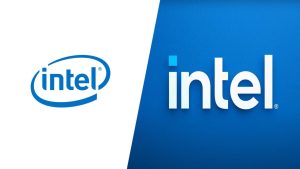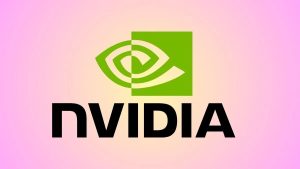Lastly, social media marketing remains drastically inside-out for most businesses as a tactical approach. They broadcast to the world through the dynamic window of social media, increasing the visibility of the brand through initiatives that engage the target audience with activities aimed at the bottom line. Social media is an environment in constant flux; therefore, realignment of strategy has to be continuous. This blog presents thumbnail tactics and tested strategies that will make your business a success story on this powerful platform a decade into the future—2024.
Knowing Your Audience in 2024
At the heart of successful social media marketing is the knowledge of your audience.
Who are they?
Which platforms do they interact with the most?
What is it that interests or engages them?
In 2024, it was all about hyper-personalization, in which content felt tailor-fitted to have personal affiliation.
Audience Demographics
First of all, some demographic conclusions: how old is he or she, what sex is he or she, where does he or she live, and what is his or her occupation? You can get all that through the audience analytics segment, using tools like Google Analytics, Facebook Insights, and LinkedIn Analytics. Knowing these basics will help you segment your audience well.
Audience Behavior
Now use this information to go deeper into the behavior of your audience: when they are most online and what kind of content they actually engage with. This kind of information can be leveraged to plan your posting schedule around all that you know about their behaviors to maximize engagements.
Building Audience Personas
Build up and flesh out detailed ideal persona profiles corresponding to different parts of the target audience. This will include details about demographics, likings, pain points, and other routine online activities that get your creation really talking to your audience.
Not All Platforms Are Equal
It’s also never been more crucial to consider and choose the right platforms when targeting potential customers. There are differences in and slightly varying features of user audiences on the respective platforms. Though the top positions on Instagram, TikTok, LinkedIn, and Twitter seem to be unshakeable by 2024, it always depends on target group settings and business expectations.
It’s good for visual content. Its majority market speaks to the very young at heart, making it great for audiences targeting fashion, travel, lifestyle industries, and many more. This is a very flexible platform when using features such as stories, reels, and shopping to engage and convert.
2024 has in store much more for TikTok and its fast growth, which specifically belongs to the large Gen Z and young millennial population on its platform. One could say it was purpose-built for short-form, creative, and engaging storytelling. The platform enables brands to do a number of things: execute challenges, share behind-the-scenes content, partner with influencers, and so on—all for reaching a bigger audience.
LinkedIn SCN Edition 》
You can network, share your ideas related to industry insight, and be a be a thought leader. No professional or decision-maker is available here whom you can reach or only through the aid of LinkedIn ads and sponsored content.
Twitter is fast-moving. High-touch customer service engagement platform; good for news and updates to your audience, engaging them in more detail. Of late, www.twitter.com spaces, making live audio conversations possible, have become a hotbed for real-time interaction.
Create engaging content
Content remains, and will always be, the essence of social media marketing. The debate might have only been going to the very creation of quality content that can draw equivalent eyeballs. In 2024, content will have to be all the more engaging and informative to meet users’ needs.
Use good-quality visuals. Bring in professional photography and design so that the image and graphics quality are high. Great design tools like Canva can make the content quite engaging.
Video Content
Video is at the top of social media. Major platforms—not just Instagram and TikTok, even YouTube—strongly prefer videos and will be much more likely to share that with users over holding images or text. Make some short-form videos for a quick engagement with your target audience, or some long-form ones to sweep the customers through a journey they will never forget.
Interactive Content
Interactive content may be in the form of a poll, a quiz, or even a live video. They significantly boost engagement. Tools that one can use in this domain include Instagram Stories or Facebook Live. Not only does the interactive content catch attention, it also gets your audience to participate in action.
Storytelling
Share stories related to your journey and success stories related to customers; take them backstage to humanize the brand and build a bond on a more human level.
Value Addition
Whether through educational articles, how-to guides, tips, and best practices, or VIP offers, make sure that value is felt by your audience. It’s this value-based content that’s going to make your brand really seem like the channel that can have questions answered and start developing a circle of trust with customers out there.
Be Consistent in Posting
Whether big or small, any business will require constant and steady flows of postings to keep the audience interested and maintain the growth of a fan base. At this point, the content calendar will help keep your posts organized and consistent without putting a strain on your team.
Creating a Content Calendar
Content calendars are a plan for exactly what posts to post and when. It allows a clear view of how far in advance you are working and can help ensure you have a good balance between content types and timeliness.
Optimizing Your Post Times
Post at the peak of your audience’s activity. Share during peak times, which you will learn through tools for analytics. Even though there are best posting times, such as for every platform, your audience may not behave according to that. So, schedule accordingly.
Frequency of Posting
It’s all about balance in the frequency of your posts. You are spamming your audience on one hand if you’re posting too much. On the other hand, the audience will get disengaged if you aren’t posting frequently enough. Thus, find a frequency at which your audience gets engaged without spamming them.This can vary between different platforms and audiences.
Engage with Your Audience
Social means it is a two-way street. Engaging your audience helps build relationships and loyalty. Engaging actually means two-way communication—responding to comments and messages, being part of conversations, and being grateful to your followers.
Responding to Comments and Messages
When comments and messages get responded to on time, it makes the audience feel important. It shows you are ready to become a listening ear to their voice or to their needs. Even better is making personalized responses.
Organize or Join Discussions
Join conversations related to your industry in particular. Engage in discussions using hashtags. This not only ensures better visibility on the platform but also makes your brand appear as an active member of your industry.
Employee-Generated Content
UGCs themselves take the brand to the pedestal of community building and trust. Request that followers share their stories and experiences related to the brand. Repost and credit the UGC, and thank them in return to keep up the onus of the community.
How to Leverage Paid Advertising
Keep in mind that, in 2024, because algorithms are continuously changing, organic reach might end up being low. Run paid ads, maximize reach, and make sure to target the right audience. Use advanced targeting options—some of which are already mentioned features within Facebook Ads, Instagram Ads, LinkedIn Ads, and Twitter Ads.
Set up ad objectives
Set clear objectives before running campaigns for branding, generating leads, or initiating online or offline sales.
Pick Your Audience
Advanced targeting options will enable you to reach people based on their demographic segments, interests, or behavioral patterns. This is the tool to make your audience smaller, hence being sure to throw ads at people for whom your product is amazing.
Measuring Ad Performance
It will be through the measurement of these that you can help to understand how effective campaigns are and make data-driven adjustments.
Test and Evaluate Your Performance
Never stop improving your social media performance—in fact, always keep testing performance. With the analytics tools, you will be able to measure key metrics that define how your audience is behaving.
Key Metrics to Track
1 **Reach**: The number of people who view your content.
**Followers Growth:** It implies an increase in the number of your followers over time. Steady growth is an indication that everything is going right when it comes to your social media strategy.
Analytics
Tools like Google Analytics, Facebook Insights, Instagram Analytics, and LinkedIn Analytics will give you some valuable metrics about your social media performance. Keep getting insights from them regularly so you are updated with the trends and can, therefore, amend the strategy wherever required.
A/B Testing
A/B testing, on the other hand, allows you to create duplicate versions of any given post or ad and then pit them against each other to match their performance. This way, you will find out what type of content, copy, or visuals really resonates with your audience.
FAQ
Now, to add some context to it, why would or should Ria care that social media marketing is a relevant topic?
A social media marketer provides the audience one is reaching from that one single platform. They can seek engaging prospects, build brand awareness, and drive conversions.
Advantages of Social Media Marketing for My Business ?
It can be very great at helping with brand awareness and brand loyalty, lead generation, website traffic enhancement, customer feedback, and relationship management.
Which social media should I market on?
This is the one where this large target population is staying. Some of the basic ones would be Facebook, Instagram, Twitter, LinkedIn, TikTok, and Pinterest.
What works on social media?
Images and videos work well. The interactive content part does, including polls and quizzes and live video too.
How frequently should one post on social media?
It all depends on who your audience is and what kind of platform you are going to use. You do not want to sound overwhelming; at the same time, you want to be consistent. For most of the platforms, 1-3 times a day seems to be okay.
How often should businesses post on social media?
This will all depend on both the audience and the channel, too. Test the timing of your posts so that you can test your analytics tools and know exactly when your audience is going to help themselves the most.
How can I get more engagement on social media?
Engage your target group with responses to comments and messages, posting engaging content, proper hashtagging, setting up collaborations with influencers, and hosting contests.
How am I supposed to manage customer service on the social media platform?
Respond to questions, comments, and messages quickly. Customer support responses, of course, can be done via DM; however, as much as possible, try to fix complaints publicly.
What is influencer marketing, and how can my business benefit from it?
It helps derive the right kind of visibility for the business, along with the credibility that it holds.
How do I create a social media strategy?
Of course, all these above-mentioned are must-dos for setting up your goal, defining whom you want to target, using the right platforms, preparing the content calendar, and setting up the budget when running paid campaigns.
So, what are some benefits of running paid ads on social media?
From targeting better demographics to increased visibility, drive website traffic to generate leads—leverage the power of paid ads.
How can I analyze my social media analytics?
You will have performance metrics, analysis of the trends, audience demographics data, performance, and content in various segments for the adjustment of the strategy based on the different analytics provisioned by the platforms.
How do I efficiently juggle multiple social media accounts?
At your beck and call are apps like HootSuite or Buffer to help you with easy publishing, monitoring, analytics, team collaboration, and many more.
What are some of the newest trends in social media marketing for 2024?
They can range from video content to ephemeral content to commerce or further developments in community building and influencer partnerships.
How will I integrate social media marketing into my bigger marketing strategy?
By having major business goals aligned with social media goals through consistent, across-platform messaging and user-generated content, cross-channel activity tracking.
What are common mistakes in social media marketing?
Overzealous and not listening to your audience. Inconsistency in branding. Avoiding the tracking of ROI. Ignoring the negative. Not taking the time to follow the best practices on the platform.




